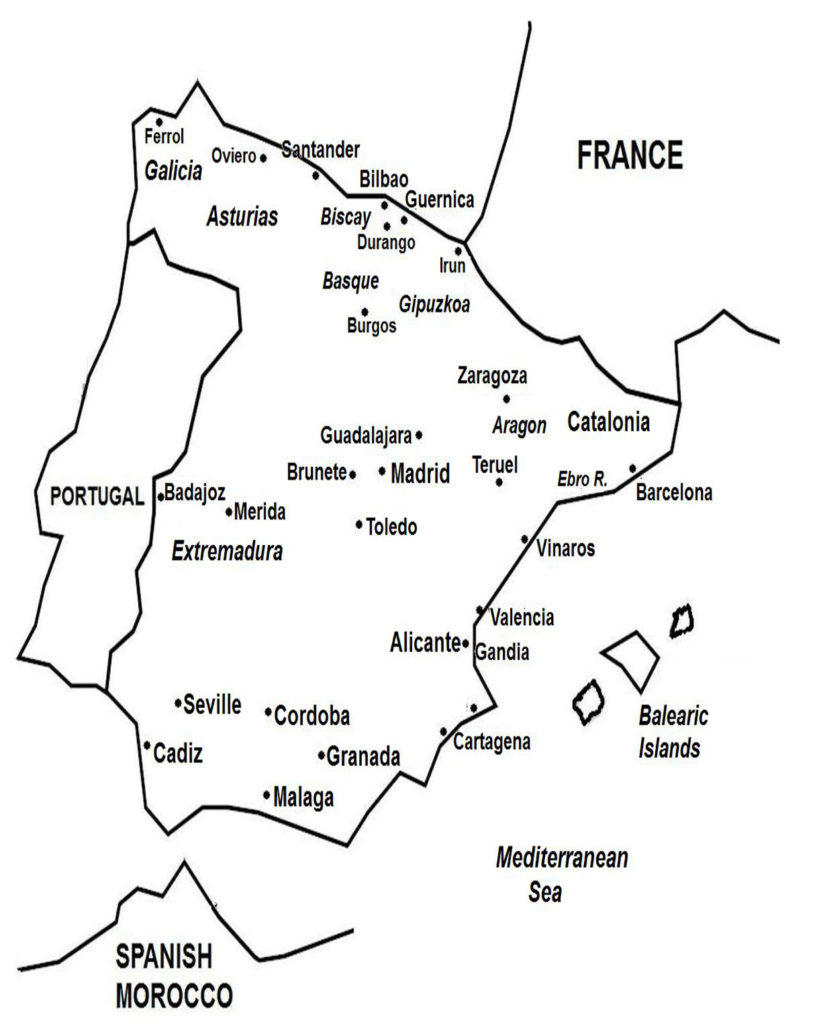(Excerpts taken from Spanish Civil War – Wars of the 20th Century – Volume 3)
On July 17, 1936, Spain’s forces in Spanish Morocco declared in a radio broadcast a state of war against the central government in Madrid, an act of rebellion that opened the Spanish Civil War. These overseas forces, called the “Army of Africa”, were the Spanish Army’s strongest fighting units and consisted of the Spanish Legion and Moroccan regiments. The Army of Africa would contribute significantly to the outcome of the land operations in the coming war.

Earlier, local authorities in Spanish Morocco had learned of the plot. As a result, the rebels were forced to move forward the uprising from the previously planned schedule of 5 AM on July 18. Shortly after the rebellion was broadcast, the Army of Africa gained control of Spanish Morocco, in the process also killing dozens of persons, including pro-government army officers and civilian leaders.
By this time, General Francisco Franco, who previously had commanded the Army of Africa and from whom he drew great respect, arrived from the Canary Islands (which also had risen up in rebellion) and took over-all command in Spanish Morocco. As agreed, the next day, July 18, many military commands in mainland Spain also declared war; thus, a large-scale army rebellion was underway.
Many other military commands, however, did not revolt or were put down while doing so. The uprisings succeeded in the southwest and in a large swathe from the coastal northwest to northern central Spain, Spanish Morocco, the Canary Islands, and most of the Balearic Islands – in total, about one-third of the country.
The government succeeded in holding onto nearly the whole eastern half of mainland Spain, the northern coastal provinces, and all the major cities including Madrid, Barcelona, Bilbao, Valencia, and Malaga – in total, about two-thirds of Spain. Many areas had been won on the government side through the efforts of socialist and communist militias who, together with loyal local police units, sealed of and barricaded rebelling military garrisons, and then forced the trapped army units inside to surrender. At the start of the army rebellion, the government had refused to heed the calls of socialist and communist leaders to arm the civilian population. Because of the emerging crisis, Prime Minister Santiago Casares resigned from office; his successor, Prime Minister José Giral then issued instructions to distribute firearms to the people.
The Spanish Army itself became divided, with about an equal number of units joining either side of the conflict; most army officers aligned with the rebels. The small Spanish Air Force remained loyal to the government, as did the Spanish Navy. The insurgents, however, seized a number of ships in Ferrol early in the war.
The rebels now realized that the uprising had failed to topple the government, and worse, their military resources were inadequate to defeat the forces that remained loyal to the government. In turn, the government was incapable of quickly ending the rebellion. As a result, the crisis appeared headed toward a protracted war.
The rebels became known as “Nationalists”, while supporters of the country’s republican government were called “Republicans”. Drawn to the Nationalists’ cause were landowners, urban elite, monarchists, right-wing politicians, and the Catholic Church (including most of the clergy). Supporting the Republicans were democracy-advocating leftist politicians, socialists, and communists. The anarchists, whose strongholds were in Catalonia and Aragon, were opposed ideologically to both sides of the war, but nominally supported the Republicans.
